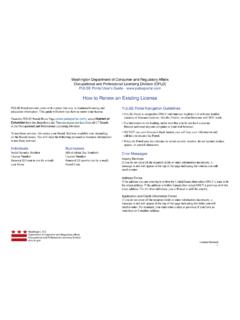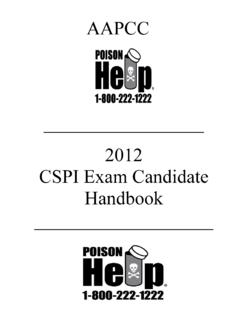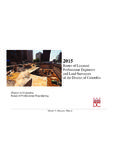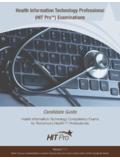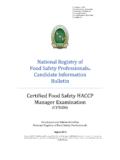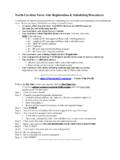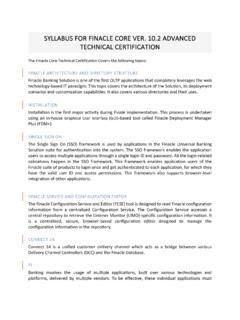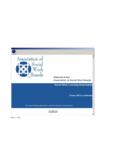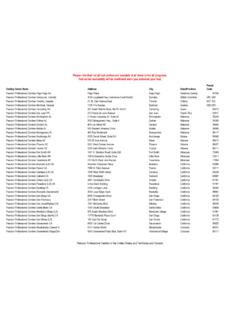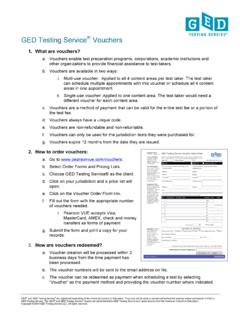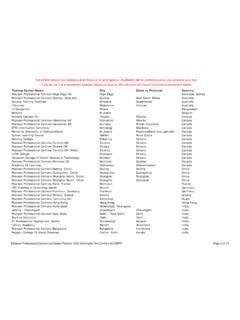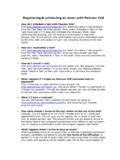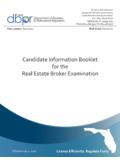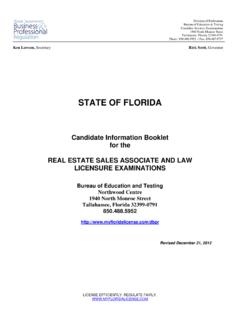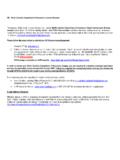Transcription of Watson – Glaser Critical Thinking Appraisal - …
1 Watson GlaserCritical Thinking Appraisal UK EditionGoodwin Watson Edwin GlaserPractice TestPublished by Pearson Assessment, 80 Strand, London, WC2R 2002, 1993, 1990, 1980, 1964 by The Psychological by rights reserved. No part of this publication may be reproduced or transmitted in any formor by any means, electronic or mechanical, including photocopy, recording or any retrieval system, without permission in writing from the in : 978 0 749107 66 6 DIRECTIONS Turn this booklet over and carefully tear off the back cover. Place it next to this booklet so that the words Practice Test Record Formare facing up.
2 Don t look at thereverse of the Record Form as that s where the answers are. Read the instructions below and then do the practice you have done thetest turn the Record Form over to check your answers. This booklet contains five types of test designed to find out how well you are ableto reason analytically and logically. Each test has separate directions that should be read carefully. All answers are to be marked on the separate Record a sharp pencil. Ifyou wish to change an answer, make sure that you erase your old answer 1: Inference2 DIRECTIONSAn inference is a conclusion that a person can draw from certainobserved or supposed facts.
3 For example, if the lights are on in ahouse and music can be heard coming from the house, a personmight infer that someone is at home. But this inference may or maynot be correct. It is possible that the people of the house did notturn the lights and the radio off when they left the this test, each exercise begins with a statement of facts that you are toregard as each statement of facts you will find severalpossible inferences , conclusions that some persons might drawfrom the stated facts. Examine each inference separately, and makea decision as to its degree of truth or each inference you will find spaces in the answer sheet labelledT, PT, ID, PF and F.
4 For each inference put a cross on the answersheet under the appropriate heading as follows:Tif you think the inference is definitely TRUE; that it properlyfollows beyond a reasonable doubt from the statement of , in the light of the facts given, you think the inference isPROBABLY TRUE; that it is more likely to be true than you decide that there are INSUFFICIENT DATA; that youcannot tell from the facts given whether the inference is likely to betrue or false; if the facts provide no basis for judging one way orthe , in the light of the facts given, you think the inference isPROBABLY FALSE; that it is more likely to be false than you believe the inference is definitely FALSE; that it is wrong,either because it misinterprets the facts given, or because itcontradicts the facts or necessary inferences from those , in deciding whether an inference is probably true orprobably false, you will have to use certain commonly acceptedknowledge or information that practically every person has.
5 Thiswill be illustrated in the example that look at the example below; the correct answers are indicatedin the box at the the exercises that follow, more than one of the inferences from agiven statement of facts may be true (T), or false (F), or probablytrue (PT), or probably false (PF), or have insufficient data (ID) towarrant any conclusion. Thus you are to judge each :Two hundred school students in their early teens voluntarily attended a recent weekend studentconference in Leeds. At this conference, the topics of race relations and means of achievinglasting world peace were discussed, since these were problems that the students selected asbeing most vital in today s a group, the students who attended this conference showed a keener interest in broad socialproblems than do most other people in their early teens.
6 (PT, because,as is common knowledge, mostpeople in their early teens do not show so much serious concern with broad social problems. It cannot beconsidered definitely true from the facts given because these facts do not tell how much concern otheryoung teenagers may have. It is also possible that some of the students volunteered to attend mainlybecause they wanted a weekend outing.) majority of the students had not previously discussed the conference topics in the schools. (PF,because the students growing awareness of these topics probably stemmed at least in part fromdiscussions with teachers and classmates.)
7 Students came from all parts of the country. (ID, because there is no evidence for this inference.) students discussed mainly industrial relations problems. (F, because it is given in the statement offacts that the topics of race relations and means of achieving world peace were the problems chosen fordiscussion.) teenage students felt it worthwhile to discuss problems of race relations and ways of achievingworld peace. (T, because this inference follows from the given facts; therefore it is true.)TEST 112345T PT ID PF F T PT ID PF F T PT ID PF F T PT ID PF F T PT ID PF F go to next page Statement:Studies have shown that there is relatively much more heartdisease among people living in the north of England thanpeople living in the south of England.
8 There is little if anydifference, however, in rate of heart disease betweennortherners and southerners who have the same level ofincome. The average income of southerners in England isconsiderably higher than the average income of easiest way to eliminate heart disease in England would be toraise the general standard of in high income brackets are in a better position to avoiddeveloping heart disease than people in low income is a lower rate of heart disease among northerners withrelatively high incomes than among northerners with much northerners have high incomes or low incomes makesno difference to the likelihood of their developing heart assumption is something
9 Presupposed or taken for granted. When you say, I ll be a qualifiedsolicitor in two months , you take it for granted that you will be alive in two months, that you will passthe relevant examinations, and similar are a number of statements. Each statement is followed by several proposed assumptions. Youare to decide for each assumption whether a person, in making the given statement, is really makingthat assumption , taking it for granted, justifiably or you think that the given assumption is taken for granted in the statement, mark YES under Assumption made in the proper place on the answer sheet.
10 If you think the assumption is notnecessarily taken for granted in the statement, mark NO in the space under Assumption made .Remember to judge each assumption independently. Below is an example. The box at the right showshow these items should be marked on the answer : We need to save time in getting there so we d better go by plane. Proposed by plane will take less time than going by some other means of transportation. (YES, it is assumed inthe statement that the greater speed of a plane over the speeds of other means of transportation will enablethe group to reach its destination in less time.)
